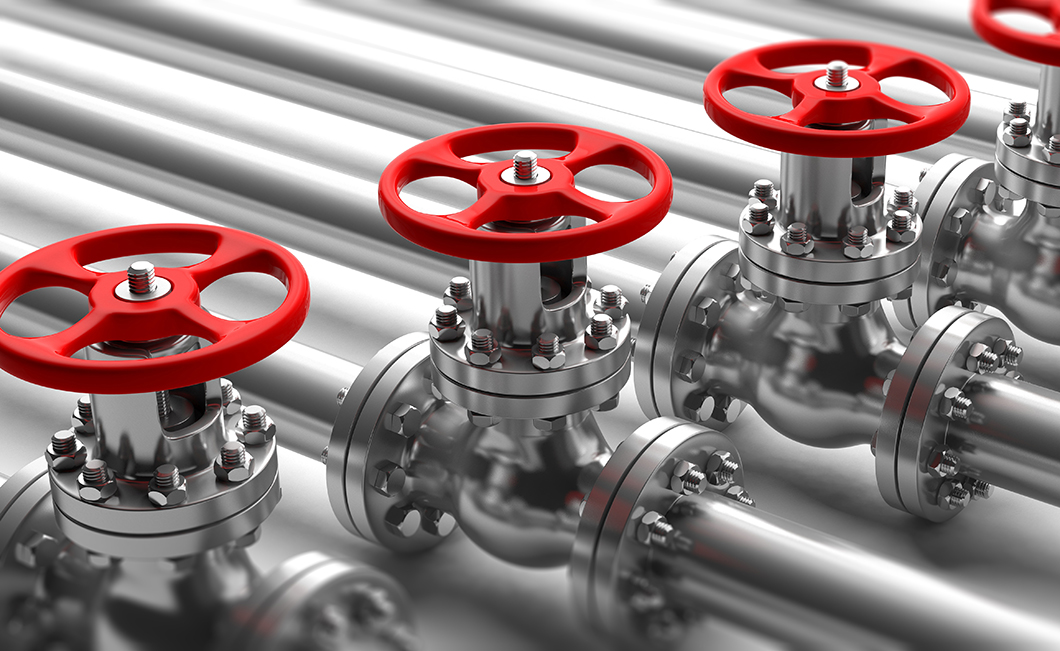
Model of the hydrogen infrastructure test platform
Source: BAM
Project period
01/01/2022 - 31/12/2025
Project type
BAM project
Project status
Ongoing
Description
This project will develop reference products in order to improve the traceability chain and comparability of test procedures for the determination of gaseous emissions from building materials.
Location
Bundesanstalt für Materialforschung und -prüfung (BAM)
Testgelände Technische Sicherheit
An der Düne 9
15837 Baruth/Mark
Hydrogen poses special challenges for materials and components. BAM is conducting research on the safe operation of pipelines in a new type of test platform. Source: Adobe Stock/Rawf8
Source: BAM
Source: BAM
ModuH2Pipe@BAM comprises three modules:
- "H2Compatibility" makes it possible to operate full-scale components under defined conditions for subsequent material-analytical investigations.
- "H2Safety" allows pipeline segments and other components to be subjected to extreme pressure until failure for subsequent examination by material analysis.
- "H2Quality" is dedicated to the influence that the components of the gas network itself can have on the quality of the transported hydrogen.
Source: BAM
Federal Ministry for Economic Affairs and Climate Action
With the testing infrastructure, which is new in Germany and Europe, BAM is helping to accelerate the transfer of knowledge and technology in the field of hydrogen safety. The further development of regulations, standards and norms should ensure the safe operation of the future hydrogen infrastructure and accelerate the market ramp-up of hydrogen technologies.
In order to build up a hydrogen infrastructure in Europe as quickly as possible, the existing gas networks are to be used in addition to the construction of new pipelines. From a technical point of view, there are still a number of questions to be answered. The German and European gas grids have grown over many decades. A variety of different materials are in use, especially steels. In some cases, it is unclear how suitable they are for transporting hydrogen. At the same time, special demands will be made on the quality of the hydrogen in a future hydrogen economy. Therefore, it must also be clarified, how strong the influence of pipelines, will be on the purity of the hydrogen that is transported. Some of the pipelines have been used for natural gas for decades.
With the ModuH2Pipe@BAM project as part of the Competence Centre H2Safety@BAM, BAM is creating a new modular test platform in Europe, which allows the examination of safety-related issues in context with hydrogen and hydrogen-natural gas pipelines on a real scale and at the same time under critical conditions. The aim is to provide e.g. gas network operators, with a range of services that enables comprehensive answers to these safety-related questions.
The test platform ModuH2Pipe@BAM will be located at the BAM Test Site Technical Safety (BAM TTS) and integrates three modules designed for the testing of components (seals, valves, etc.) and pipeline segments on a full scale.
With the "H2Compatibility" module, components are subjected to thermal and cyclic loads for an accelerated conditioning, i.e. to simulate long-term use. In subsequent material analysis tests, the influence of hydrogen on the used steels, seals, etc. is examined.
The "H2Safety" module allows pipeline segments and other components to be subjected to extreme pressure until they fail. Damaging provoked in this way is then examined in detail by means of material analysis.
In the "H2Quality" module, special online gas analysis is used to investigate the effects that components and materials that have already been used for other energy sources, such as natural gas, can have on the quality of the transported hydrogen. Furthermore, hydrogen is deliberately contaminated and its influence on new materials is thus tested.
Partner
Federal Ministry for Economic Affairs and Climate Action


